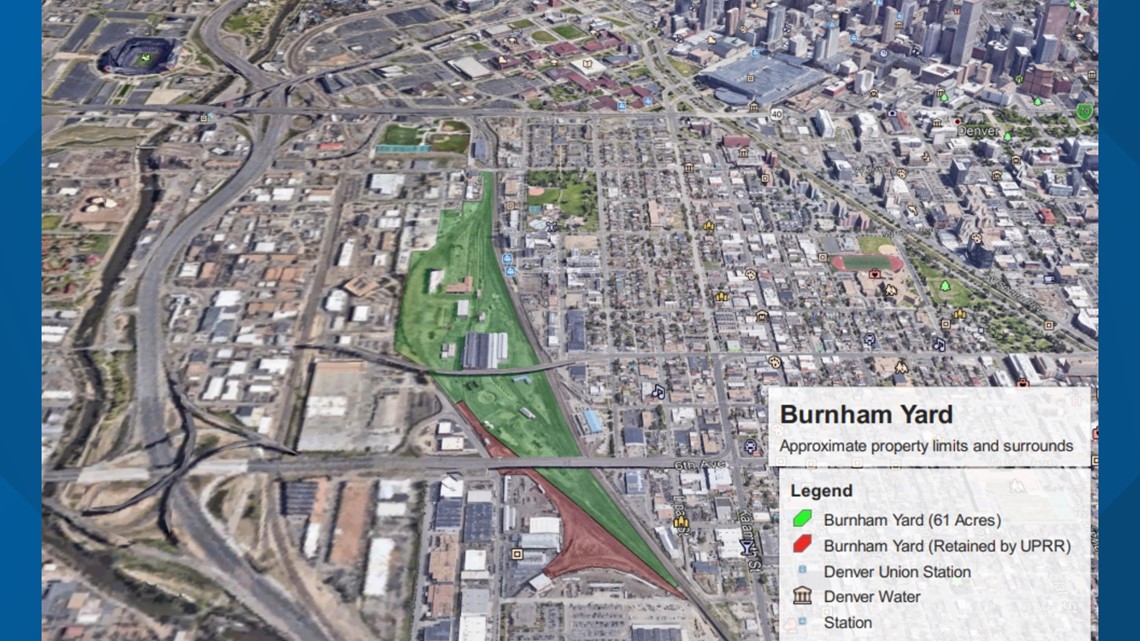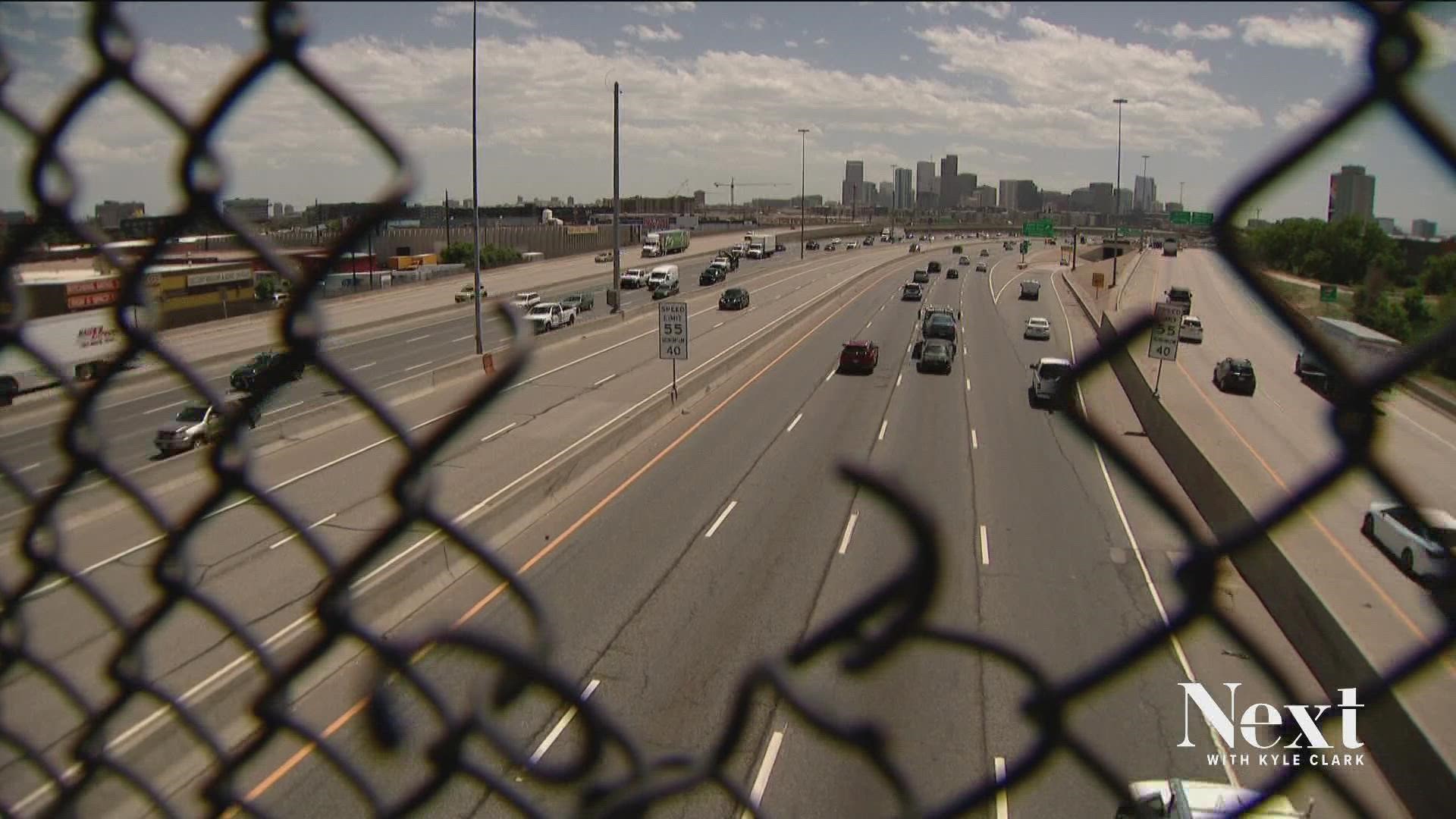DENVER — Even if the Colorado Department of Transportation (CDOT) was still going to expand Interstate 25 through Central Denver, it would not lessen the traffic gridlock drivers will experience on Wednesday afternoon. That's when the Colorado Avalanche host Game 1 of the Stanley Cup Final against the Tampa Bay Lightning at Ball Arena.
The stretch of I-25 between Alameda Avenue and past the stadiums is notorious for rush hour-like slowdowns outside of rush hour.
Last year, CDOT bought the Burnham Yard property just east of I-25 between Alameda and 13th Avenue. It cost $50 million, with $7.5 million contributed by the Colorado Office of Economic Development. The goal was to expand I-25, enhance the rail line for passenger rail and give the Regional Transportation District (RTD) the option to expand light rail lines.
RELATED: Sale of old Denver railyard could mean moving I-25, new rail lines and vertical development


That was the goal.
In April, CDOT Executive Director Shoshana Lew sent a letter to the state's Office of Economic Development with a new development.
"CDOT has also determined that the funds do not exist for the widening of I-25 between 6th Avenue and Alameda Avenue and that only relocating the [railroad] off I-25 must be studied," Lew wrote.
Despite CDOT's announcement that it cannot fund the expansion of I-25, groups that support alternative forms of transportation want CDOT to abandon any thought of expansion.
"It was welcome news to see CDOT take I-25 expansion off the table for the next five years. We really thank them for that. Now, it's time to go the next step and remove it from the 10-year plan," said transit commuter Chris Applegate.
Applegate was one of several speakers at an event on Tuesday morning on the opposite side of I-25 from Burnham Yard, to highlight a push to restrict highway expansion in lieu of other transit options, like bus and bike.
"What we need is more buses that are efficient in getting us to our jobs, doctors, schools or wherever we need to go," said Sun Valley resident Jenny Esquibel.
Sun Valley is just west of I-25 in Central Denver, south of Mile High.
The thing is, however, CDOT has already backed off expanding I-25 through central Denver. However, it is still moving ahead with plans to move the railroad for a passenger rail line from Pueblo to Fort Collins.
"We're here, again, to urge CDOT to take I-25 widening off of the 10-year plan, reinvest those funds in alternate transportation methods," said Juan Roberto Madrid from GreenLatinos, a national non-profit that focuses on environmental issues for Latino communities.
CDOT's 10-year plan is already three years in. The first item on the list is the Burnham Yard property, though it no longer includes expanding I-25.
"Right now, the plan, kind of, reads like a menu where highway projects are the entrées," said Molly McKinley, policy director for Denver Streets Partnership.
The 10-year plan contains 10 pages of highway and transit projects statewide.
"We need projects that think about moving people, not just cars," said McKinley. "Doubling down on highway projects will only make life worse for residents of the Denver Metro region, including communities like Sun Valley, which are already the most heavily impacted by air pollution, burdensome transportation costs and increased greenhouse gas emissions."
CDOT is reviewing its 10-year plan because of a 2021 state law that required the implementation of a greenhouse gas rule. CDOT needs to consider greenhouse gas mitigation in future projects. There is a frequently asked questions page on the CDOT website that addresses greenhouse gases and highway expansion.
Q: How will this [greenhouse gas] rule impact highway expansion?
A: CDOT recognizes that the strategic widening of key segments of our highway system play an important role in the future safety and mobility of the transportation system. What this Rule requires is that we analyze these projects--as part of the entire mix of projects within a plan--and, if necessary, take steps to reduce (or mitigate) emissions. That can happen by taking actions specific to a widening project or elsewhere in the system (such as making larger, more programmatic investments in transit).
SUGGESTED VIDEOS: Full Episodes of Next with Kyle Clark

